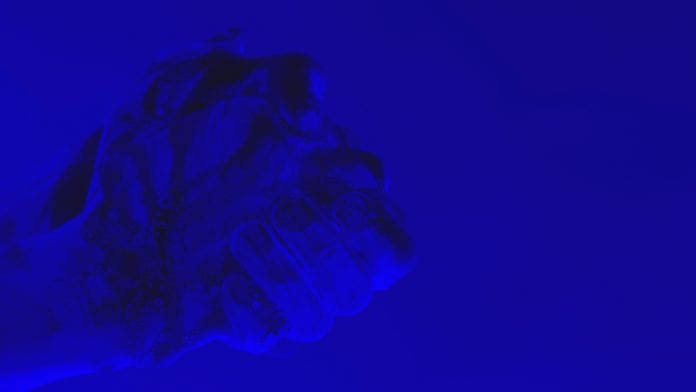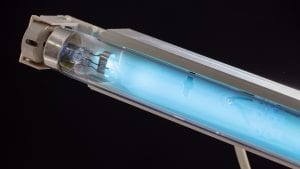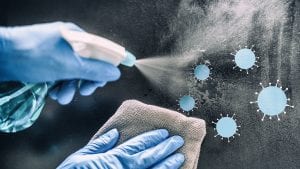
Following the surge in demand for ultraviolet (UV) disinfection equipment during the pandemic, the International Ultraviolet Association discusses the rise of commercial UVC products and the need to establish clear industry standards.
With the onset of the coronavirus pandemic, good hygiene practices have become a prerequisite in our everyday routines. The increasing demand for products which promise efficiency in destroying harmful bacteria and viruses have, in turn, opened up opportunities for the wider adoption of UVC disinfection technologies. When used correctly, specific wavelengths of ultraviolet (UV) radiation (between 200-280 nanometres) known as UVC, has proven to be effective in destroying coronavirus pathogens and therefore helping to reduce the risk of transmission, particularly in healthcare settings. In addition to their use in the healthcare sector, UVC disinfection applications have also started to infiltrate the commercial market with products including disinfection cabinets, self-cleaning water bottles and room air disinfection devices becoming more and more common in domestic domains.
Although the use of UVC applications for disinfection purposes can be traced as far back as the 1930s, the technology remains relatively new and establishing standards and regulations that can fully protect users’ safety and ensure applications are being used correctly is still an ongoing process. Part of the International Ultraviolet Association’s (IUVA) mission is to promote the adoption of rational, environmental regulations that will make it easier for the public to be informed about the uses of UVC technology. To find out more, Health Europa Quarterly (HEQ) spoke to Troy Cowan who is a coordinator at the IUVA Healthcare Working Group and part of the team working to develop standards that clearly assess the efficiency and credibility of UVC-based products.
To begin, can you give me an overview of the IUVA and its main aims/objectives?
The IUVA is largely a research, science-based organisation with the primary aim of facilitating UV’s application as a leading technology to improve public health and the environment. Our focus in the healthcare industry has been on hospital-acquired infections, which are responsible for between 75,000 and 100,000 deaths per year in the US, equating to one in every 25 people that go into a hospital.
Although we are not an industrial association, we have many industrial and academic members as well as a few application-user members. Additionally, we welcome participation from federal, regulatory, and advisory bodies, most notably being the National Institute of Standards and Technology (NIST). Over the past five years, we have expanded our healthcare working group and now involve over 120 of IUVA’s 800 members, and cover at least 14 of IUVA’s 30 countries. One of our objectives is to support the interests of companies using ultraviolet technologies and to provide them with the latest research and developments around ultraviolet applications. We also organise national and international conferences to further support this.
Can you explain how UVC disinfection technologies work? What key advantages do they offer in comparison to other common disinfection methods used within healthcare settings?
UVC disinfection technologies work by emitting an invisible UVC radiation (i.e. not part of the visible light spectrum) that disrupts a pathogen’s DNA and RNA so it cannot reproduce and grow. Since the effectiveness of the UVC is dependent on direct access to the pathogen, the pathogen must be fully exposed and not covered over or in the shadow of dust and other contaminates. Hospitals often incorporate UVC into the normal room cleaning regimen before moving a new patient into a previously occupied room, referred to as a ‘terminal cleaning.’ This ensures the area has been wiped down before the UVC light is applied, maximising the UVC’s effectiveness. As a result of COVID-19, UVC disinfection is being increasingly used in public facilities such as airports, warehouses, reception rooms, healthcare clinics, clinical hallways and nursing homes. There is some time investment in prevention, but essentially, it is all about reducing the risk and potential impact to the patient, the healthcare system and the economy.
In terms of the advantages that UVC disinfection offers over conventional cleaning methods, firstly, there is no chemical residue left after treatment and thus no production of superbugs. Likewise, the UVC devices tend to be easy to operate and may be cheaper in comparison to long term use of chemical disinfectants when all life-cycle costs are included. The drawbacks of using UVC to clean means regular cleaning methods must still be in place to reduce dirt, dust and other soiling contaminants that might shield the pathogen from getting the necessary UVC dose. Additionally, to be effective, the UVC device needs to ‘light up’ (irradiate) the pathogen with enough ‘dose’ to break-up the DNA. How much is required varies with each pathogen (e.g., C-diff, MRSA, or SARS-CoV-2) and with each different wavelength of UVC delivered (e.g., 254nm, 265nm, or 222nm). Getting that mix right is sometimes a challenge.

UV technologies are now moving beyond the healthcare space with the consumer products representing one of the fastest growing areas.
What impact has COVID-19 had on the industry? How has the market for UV technology changed?
The pandemic has had a dramatic impact on the demand for existing UVC products. New UVC products have also been introduced to capitalise on the demand for disinfection technologies. The UVC industry has really tried to move with the science and companies are eager to bring out new products. When COVID-19 – which is caused by the SARS-CoV-2 virus – began, it was unclear what the infection pathway was – if it spread through the air, surfaces or through water. Most of the UVC machines at that time were focused on surface disinfection, and in particular, high-touch areas. As such, the UVC industry was all about marketing their surface disinfection devices, which include robots that move around shining lights on tables, chairs, beds, and walls, and UVC cabinets used to disinfect equipment and smaller items. As the science came to understand it was really an airborne pathogen, emphasis started to change in favour of upper air UVC treatment applications.
Perhaps the biggest change is that the traditional healthcare market (hospitals, clinics, etc.) has opened into a greatly expanded public consumer market. UVC technologies are now moving beyond the healthcare space with the consumer products representing one of the fastest growing areas. UVC-based applications such as wands are being marketed as robust cleaning products for household surfaces, however these must be approached with caution. Any UVC can cause minor damage to human skin and eye tissue. This is something akin to temporary sunburn or mild cornea burn, which heals in two to three days, but it is not pleasant. Longer wavelengths of UV (e.g. UVA and UVB, between 280nm-400nm) can cause major sunburn/cornea injuries and increase the risk of various types of cancers. Therefore, people should avoid being directly exposed to UV, regardless of type.
Alternative wavelengths which may be safer, such as UV 222 nm, are currently being researched and could eventually be used in applications placed on ceilings which would continually disinfect the surrounding air.

The effectiveness of the UVC is dependent on the light getting to the pathogen so the surface must be clear of dust and other contaminates, therefore leaving the pathogens exposed.
What are some of the key challenges in scaling up the use of UV disinfection technologies in healthcare settings? How can companies ensure the products they are purchasing are reliable and safe?
Challenges include getting the healthcare agencies and regulators comfortable with a technology that, while having been around for 100 years, has not been widely marketed or utilised. UV was used as far back as the 1930s and 40s to combat the spread of tuberculosis. It was used in hospitals and long-term healthcare wards; any place where TB was a problem. It subsequently fell out of favour and largely stopped being used because the technology was not that reliable at the time and antibiotics were also being used to treat diseases, so they no longer worried so much about prevention. Now we have come full circle, the antibiotics are producing superbugs, which are harder to treat, but do they fall prey to UV. We are getting back into prevention mode.
The safety of UV technologies is well covered in a number of very conservative requirements from the National Institute for Occupational Safety and Health (NIOSH) and UL guidelines. We say conservative, in that they have remained largely unchanged in the last 25 years and were developed for UV as a generic class of products, when in fact, there are up to five subclasses with varying safety requirements (i.e. UVA, UVB, UVC, Far UVC and Vacuum UV). Some of the UVC exposure guidelines may be updated soon, specifically relaxing the guidelines on UVC exposure (especially Far UVC), while tightening them for UVA and UVB. This will make it easier to implement the upper-air solutions in public spaces, mentioned earlier.
Where standards are lacking is in UVC product’s disinfection effectiveness. There are currently no standards in place for assessing efficacy and that is something the IUVA is working to change in collaboration with NIST, IES and ASHRAE. There are lots of guidelines and studies, addressing UVC device efficacy, but none that are performed in a standardised manner, leading to very inconsistent results and inconclusive dosage inactivation curves (i.e. how much UVC you need to kill which bug).
Can you tell me about any recent developments or innovations in UV technology?
There are going to be several new devices coming out soon using the 222-nanometre wavelength, though there is some science that still needs to be researched there. We are also hoping to have greater clarification on the amount of UV needed to destroy different pathogens, that we can then present to the public. We are hopeful that the information on UV and its acceptability will improve greatly in the very near future. We are working hard to make that happen.
Troy Cowan
Coordinator
IUVA Healthcare Working Group at International UV Association
https://iuva.org/
This article is from issue 18 of Health Europa. Click here to get your free subscription today.








